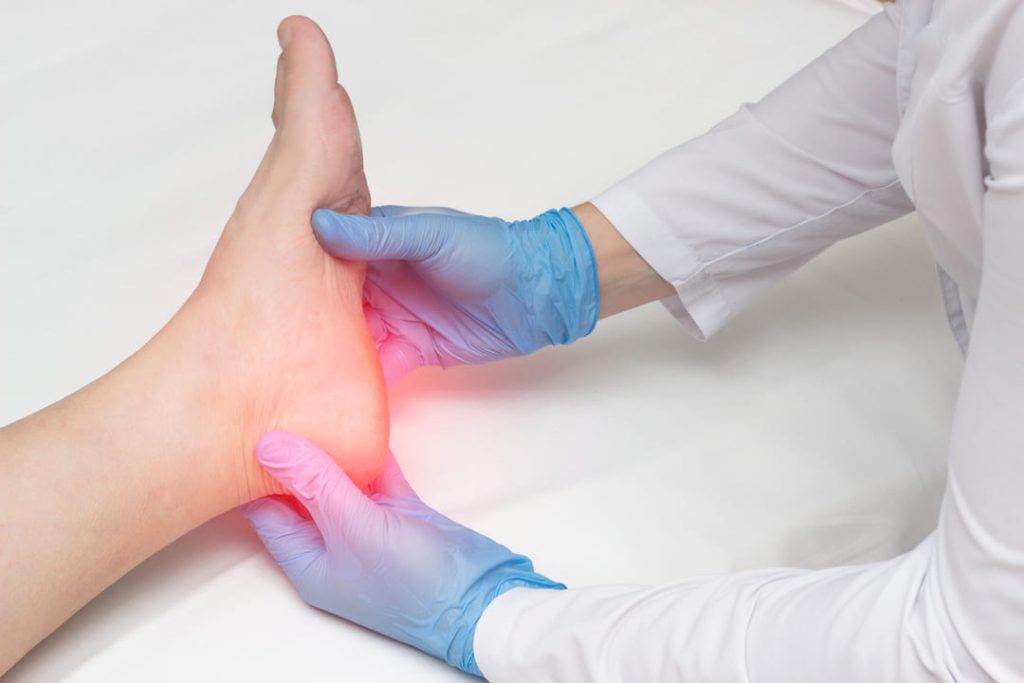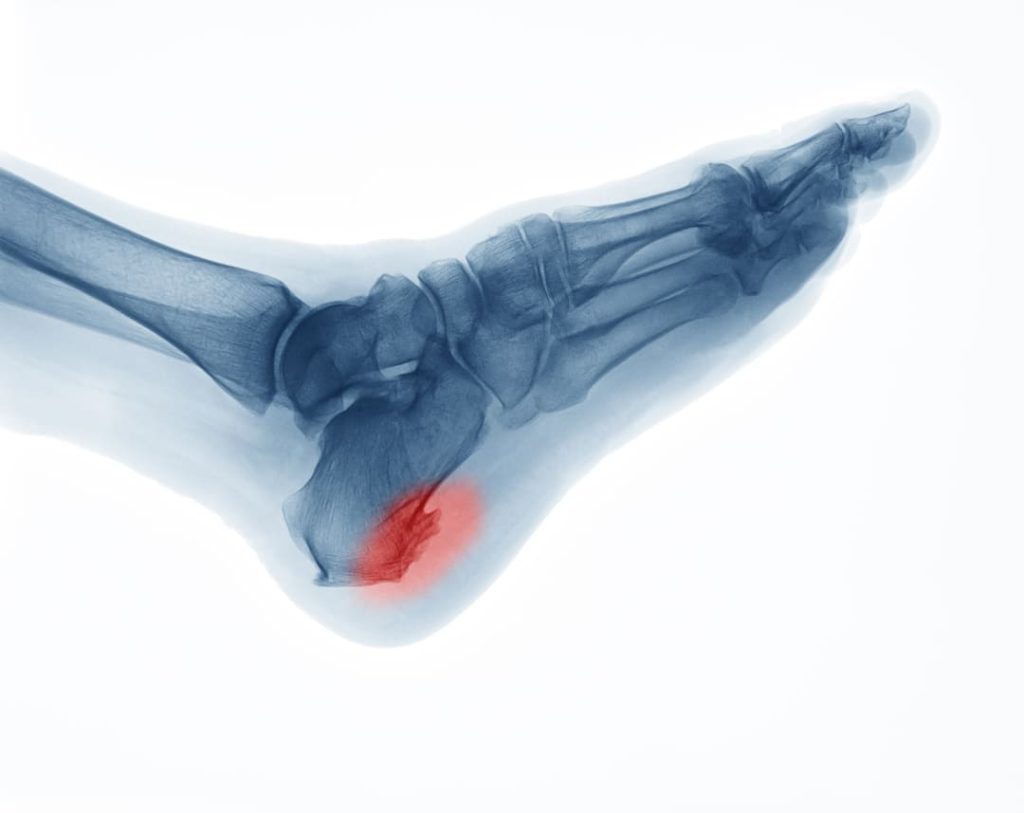Looking for Expert-Level VA Claim Answers?📱Call Us Now! 737-295-2226
As a veteran, you spent a significant part of your career on your feet. With that comes side effects like heel spurs, which can affect one or both feet.
The good news is you may qualify for a VA rating for bilateral heel spurs if you can prove your military service caused your condition.
The VA claims process can be a challenging road to navigate, but we’ve got your back.
This post will dissect how the VA rates heel spurs, how to service-connect your condition, and how to file a VA claim. Let’s get to it!
Table of Contents
Summary of Key Points
- The VA rates bilateral heel spurs by analogy under the 38 CFR § 4.71a – Schedule of ratings—musculoskeletal system.
- There is no specific diagnostic code for heel spurs; instead, the VA will rate you based on a similar condition.
- To service-connect your condition, you must have a current medical diagnosis, evidence of an in-service event, injury, or illness, and a link between your condition and military service.
You DESERVE a HIGHER VA rating.
Take advantage of a VA Claim Discovery Call with an experienced Team Member. Learn what you’ve been missing so you can FINALLY get the VA disability rating and compensation you’ve earned for your service.

Heel Spurs in Veterans
Heel spurs are caused by stress to your foot ligaments and result in a bony growth that pokes out below your back heel bone inside your feet.
If you have bilateral heel spurs, you experience the condition in both feet. Generally, heel spurs develop over time and are detected when you notice heel pain.
Frequently, you develop heel spurs due to osteoarthritis, which is caused by:
- Repeated stress on your joints
- Joint injuries
- Certain metabolic diseases
- Obesity
- Older age
Treatment for bone spurs varies from nonsurgical options (i.e.: medication or physical therapy) to surgery, which is why it’s vital you see a healthcare professional if you suspect you suffer from heel spurs.
Your doctor will perform a physical exam and may order imaging tests to better examine your bones and joints.

How the VA Rates Bilateral Heel Spurs
The VA rates bilateral heel spurs by analogy under the 38 CFR § 4.71a – Schedule of ratings—musculoskeletal system.
There is no specific diagnostic code (DC) for bone spurs; instead, the VA assigns a rating based on the criteria of an analogous condition with similar symptoms.
For example, many veterans with bone spurs are rated under DC 5279 for metatarsalgia, or Morton’s Disease, a condition that causes pain and inflammation in the ball of your foot. The highest VA rating for metatarsalgia, unilateral or bilateral, is 10%.
While we’re talking about heel spurs, remember you can experience bone spurs in other parts of your body (i.e., hips and knees), so it’s vital you discuss any unexplained pain with your doctor.
Establishing Service Connection
To receive a heel spur VA rating, you must service-connect your condition. While you can submit a VA claim without medical evidence, the more information you provide to support your case, the better your chances of receiving the VA disability rating you deserve.
Establishing service connection requires the following three things:
- A current medical diagnosis
- An in-service event, injury, or illness that caused or aggravated the disability
- A medical link (or nexus) between your condition and the in-service event, injury, illness, or aggravation
See More: What Does Service-Connected Mean?

How to Win a VA Rating for Bilateral Heel Spurs
To receive a heel spurs VA rating, you must apply for VA disability by filing a claim. It’s the first step in receiving the benefits and compensation you deserve.
The easiest way to file a VA disability claim is online, but you can also complete VA Form 21-526EZ and send it in one of the following ways:
- By Mail to:
Department of Veterans Affairs
Claims Intake Center
PO Box 4444
Janesville, WI 53547-4444
- In person at a VA regional office near you
- By fax to:
Inside the U.S.: 844-531-7818
Outside the U.S.: 248-524-4260
Find Out If You’re Eligible for VA Disability Compensation
Heel Spurs as a VA Secondary Condition
Frequently, one condition leads to another, which the VA recognizes as a secondary condition.
If you developed heel spurs due to a service-connected condition, you can file a VA claim for a secondary service connection.
For example, plantar fasciitis frequently causes heel spurs. The VA rates plantar fasciitis at 10%, 20%, 30%, and 40% depending on whether it affects one or both feet and how much treatment you need.
RELATED: Plantar Fasciitis and Secondary VA Claims
NEED MORE ASSISTANCE?
Most veterans are underrated for their disabilities and, therefore, not getting the compensation they’re due. At VA Claims Insider, we educate and help you take control of the claims process so you can get the rating and compensation you’re owed by law.
Our process takes the guesswork out of filing a VA disability claim and supports you every step of the way in building a fully developed claim (FDC)—so you can increase your rating fast!
If you’ve filed your VA disability claim and have been denied or have received a low rating—or you’re unsure how to get started—reach out to us! Take advantage of a VA Claim Discovery Call. Learn what you’ve been missing—so you can FINALLY get the disability rating and compensation you deserve!
FAQs | Frequently Asked Questions
Can you get a VA disability rating for bone spurs in feet?
Yes, you may be eligible for VA disability for bone spurs in your feet if you can prove your condition is directly caused by your military service. However, since there is no specific DC for bone spurs, you’ll receive a VA rating for an analogous condition with similar symptoms.
Can you get TDIU for bilateral heel spurs?
You may qualify for Total Disability Individual Unemployability (TDIU) for heel spurs if you meet the following requirements: You can’t hold down a steady job that supports you financially (known as substantially gainful employment) because of your service-connected disability. Odd jobs (marginal employment) don’t count. And one of these must be true: You have at least 1 service-connected VA disability rated at 60% or more disabling, or You have 2 or more service-connected VA disabilities, with at least 1 rated at 40% or more disabling and a combined VA disability rating of 70% or more
What causes heel spurs in veterans?
Veterans may develop heel spurs due to joint injury from heavy lifting, overuse, physical training, and combat.
How does the VA rate bone spurs?
There is no specific VA diagnostic code (DC) for bone spurs; instead, the VA assigns a rating based on the criteria of an analogous condition with similar symptoms.
Author

Kelly Olone
Kelly Olone is a military spouse who earned her degree in Psychology from Florida International University. After working in the non-profit sector for several years, she turned to her passion for writing. She aims to contribute to a better understanding of the valuable benefits that veterans deserve. As a mom, Kelly navigates the delicate balance between deadlines and bedtime stories with finesse.



